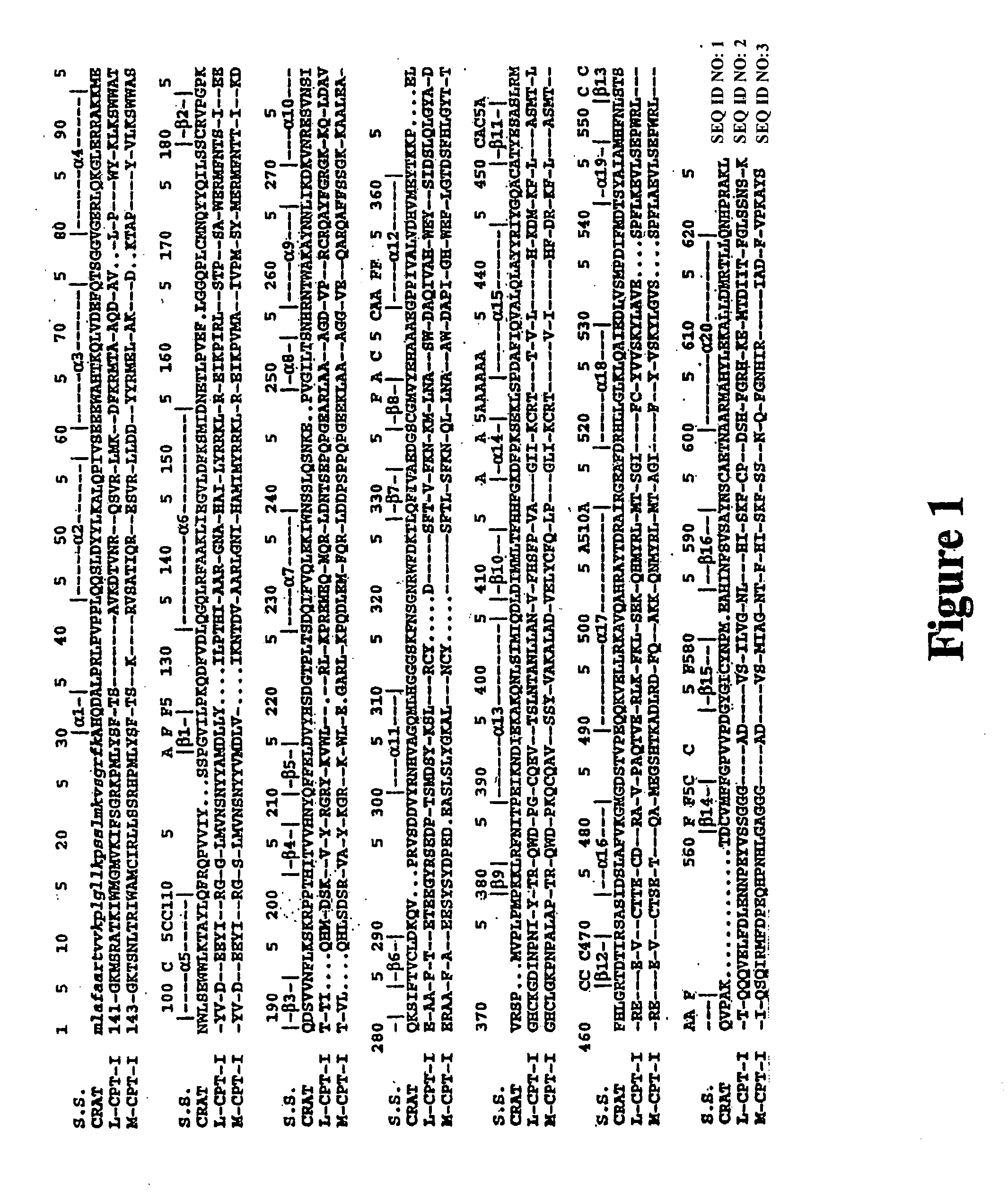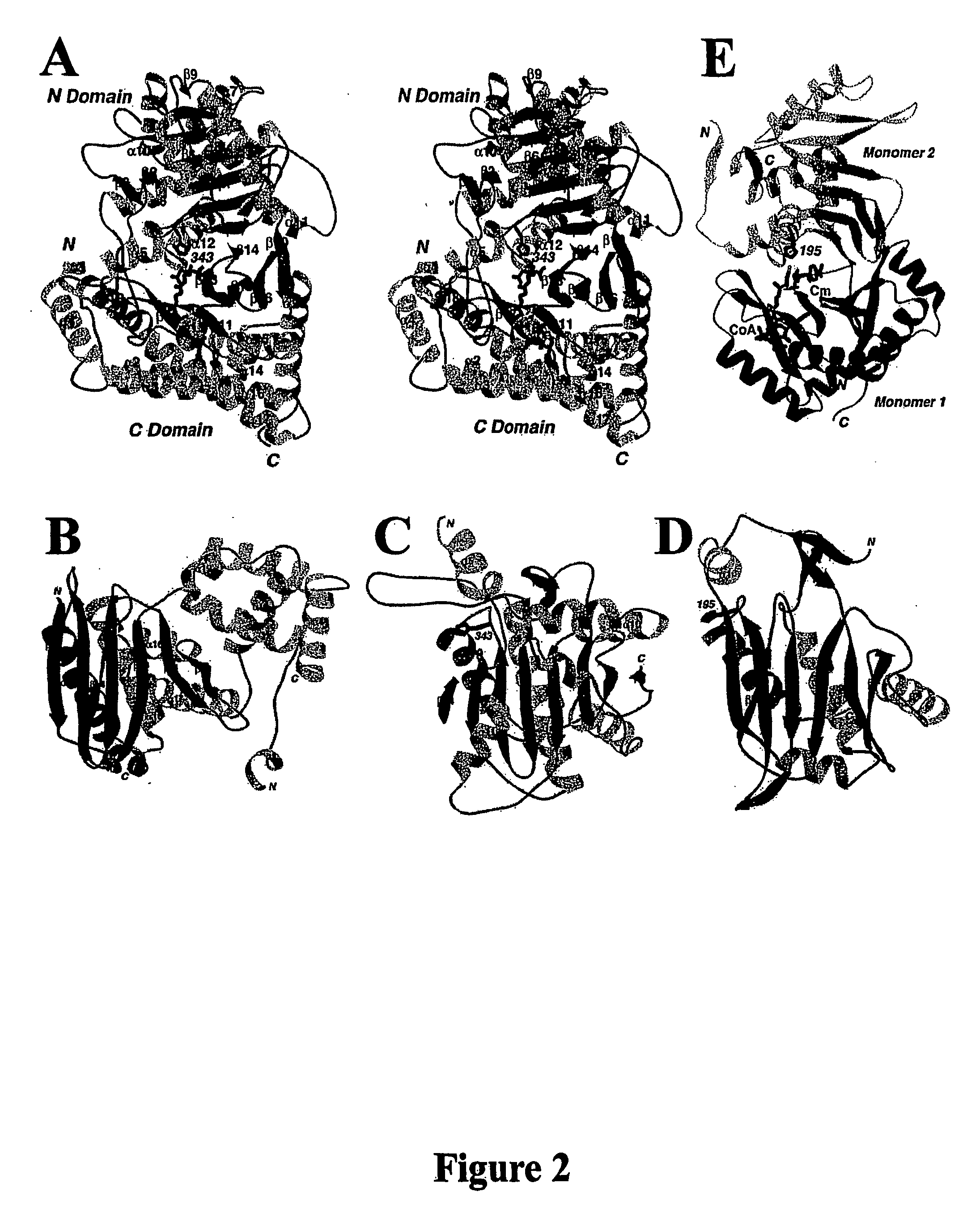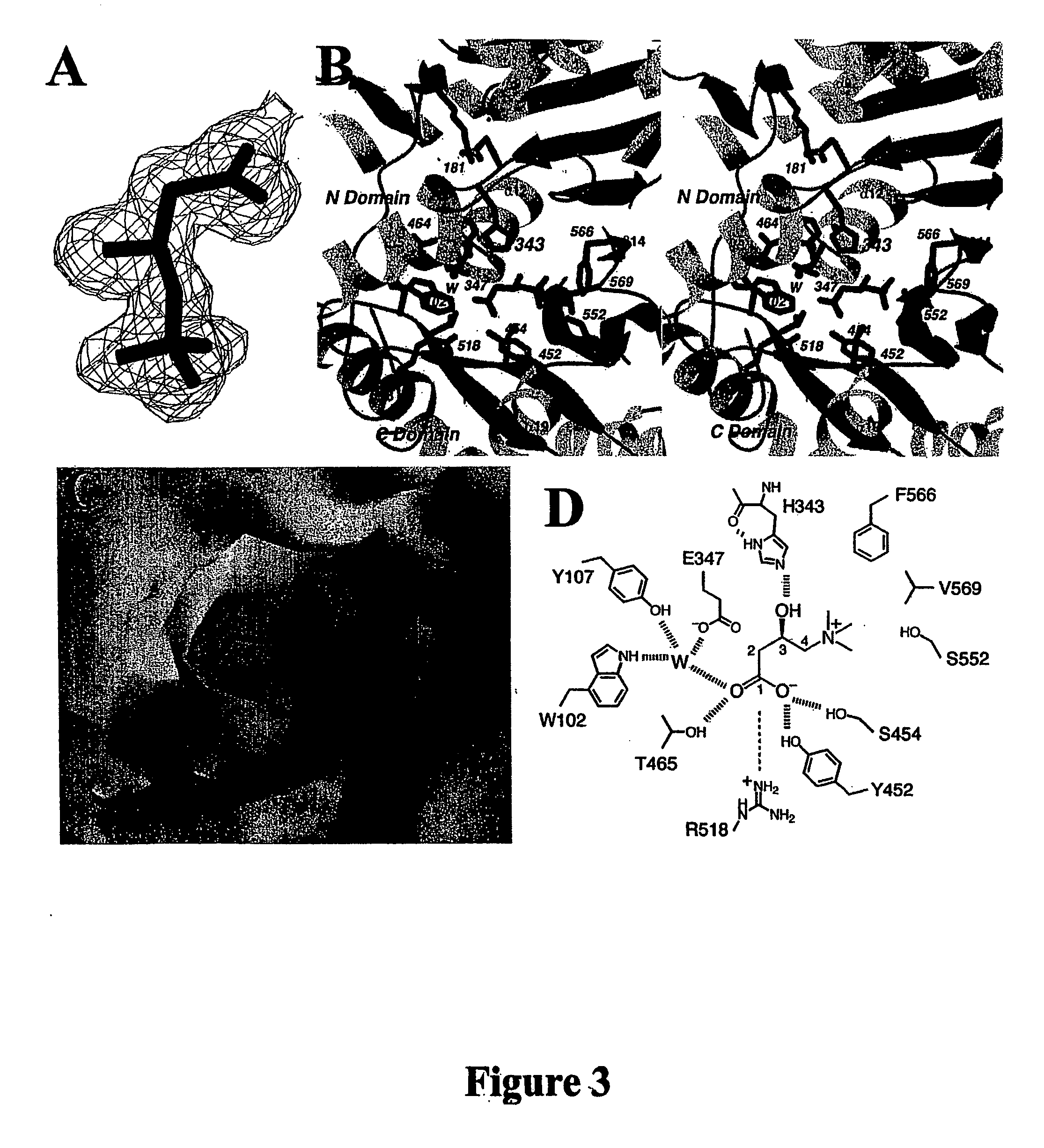Structural models of carnitine acyltransferases and uses thereof
a technology of carnitine acyltransferase and structure model, which is applied in the direction of transferases, molecules, instruments, etc., can solve the problems of inability to effectively inhibit the oxidation of fatty acids by agents such as directly inhibiting the oxidation of fatty acids, rational drug design, and extremely limited structural information available for these enzymes, and achieves a simple template
- Summary
- Abstract
- Description
- Claims
- Application Information
AI Technical Summary
Benefits of technology
Problems solved by technology
Method used
Image
Examples
example 1
Protein Expression and Purification
[0119] Residues 30-626 of mouse carnitine acetyltransferase (CRAT) was sub-cloned into the pET28a vector (Novagen) and over-expressed in E. coli at 20° C. The expression construct excluded the mitochondrial signal peptide (residues 1-29) of the native protein and introduced a hexa-histidine tag at the N-terminus. The soluble protein was purified by nickel-agarose affinity chromatography, anion exchange and gel-filtration chromatography. The protein was concentrated to 40 mg / ml in a buffer containing 20 mM Tris (pH 8.5), 200 mM NaCl, and 10 mM DTT. The N-terminal His-tag was not removed for crystallization.
[0120] For the production of selenomethionyl proteins, the expression construct was transformed into DL41(DE3) cells. The bacterial growth was carried out in defined LeMaster media (Hendrickson et al. (1990) Selenomethionyl proteins produced for analysis by multiwavelength anomalous diffraction (MAD): a vehicle for direct determination of three-...
example 2
[0121] Crystals of mouse CRAT free enzyme were obtained at 4° C. by the sitting-drop vapor diffusion method. The reservoir solution contained 100 mM Tris (pH 7.5) and 20% (w / v) PEG3350. The protein was at 20 mg / ml concentration (diluted 1:1 with water from the stock). The crystals were cryo-protected with the introduction of 25% (v / v) PEG200 and flash frozen in liquid nitrogen.
[0122] Crystals of mouse CRAT in complex with carnitine were obtained at 4° C. by the sitting-drop vapor diffusion method. The reservoir solution contained 100 mM Tris (pH 8.0) and 12% (w / v) PEG3350. The protein was at 16 mg / ml concentration, and carnitine was present at 0.6 mM concentration.
[0123] For the CoA complex, crystals of the free enzyme of CRAT were soaked with 1.5 mM of acetyl-CoA overnight at 4° C. before they are treated with PEG200 and flash-frozen for data collection.
example 3
Data Collection and Processing
[0124] X-ray diffraction data were collected on an ADSC CCD at the X4A beamline of Brookhaven National Laboratory. A seleno-methionyl single-wavelength anomalous diffraction (SAD) data set to 1.8 Å resolution was collected at 100K on the free enzyme crystal, and native reflection data sets were collected for the carnitine and CoA complexes. The diffraction images were processed and scaled with the HKL package (Otwinowski and Minor (1997) Processing of X-ray diffraction data collected in oscillation mode, Method Enzymol 276:307-326). The crystals belong to the space group C2, with cell dimensions of a=158.9 Å, b=89.6 Å, c=19.4 Å, and β=127.5° for the free enzyme crystal, a=160.7 Å, b=91.7 Å, c=122.6 Å, and β=128.8° for the carnitine complex, and a=162.3 Å, b=92.0 Å, c=122.9 Å, and β=129.0° for the CoA complex. There are two molecules in the crystallographic asymmetric unit. The data processing statistics are summarized in Table 1.
PUM
| Property | Measurement | Unit |
|---|---|---|
| concentration | aaaaa | aaaaa |
| concentration | aaaaa | aaaaa |
| temperature | aaaaa | aaaaa |
Abstract
Description
Claims
Application Information
 Login to View More
Login to View More - R&D
- Intellectual Property
- Life Sciences
- Materials
- Tech Scout
- Unparalleled Data Quality
- Higher Quality Content
- 60% Fewer Hallucinations
Browse by: Latest US Patents, China's latest patents, Technical Efficacy Thesaurus, Application Domain, Technology Topic, Popular Technical Reports.
© 2025 PatSnap. All rights reserved.Legal|Privacy policy|Modern Slavery Act Transparency Statement|Sitemap|About US| Contact US: help@patsnap.com



